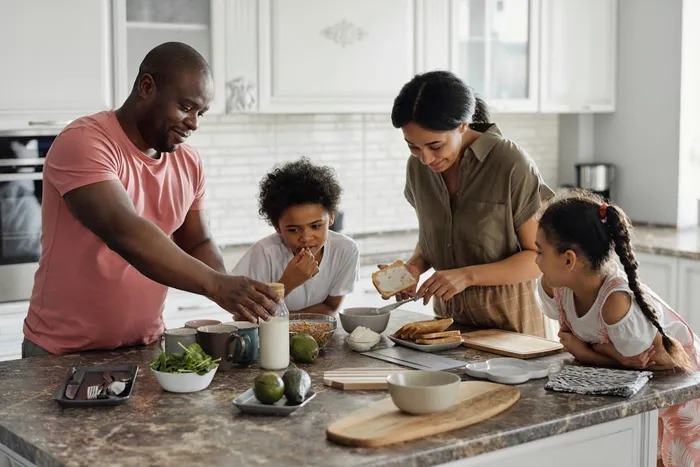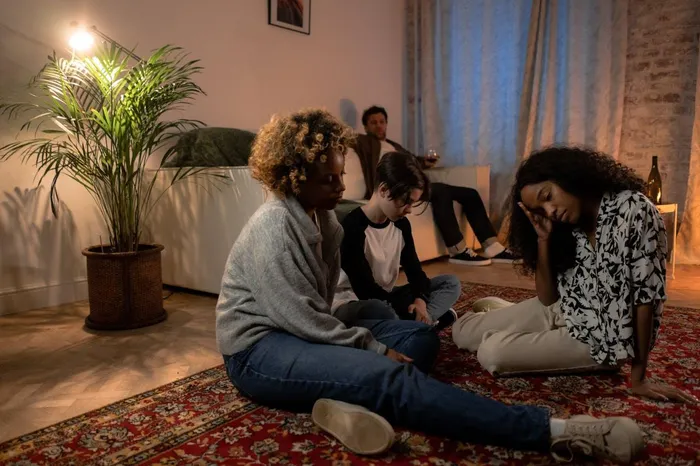How childhood trauma affects adult well-being: understanding the lingering impact

Understanding the manifestations of trauma is essential. Often, trauma hides in plain sight, disguised as busyness, perfectionism, or emotional numbness.
Image: cottonbro studio /pexels
Many believe time heals all wounds, but for a lot of people, childhood pain does not just disappear as they grow older.
It often stays with them, affecting how they form relationships, handle stress, and trust others. On World Mental Health Day, celebrated on October 10, it is important to remember that invisible scars can have a lasting impact.
“People assume we outgrow trauma,” says Thomas O’Connor, director of the Wynne Center for Family Research at the University of Rochester Medical Center.
“But when trauma happens early in life, it can alter both brain and body with lifelong effects.”
What exactly is childhood trauma?
Childhood trauma is not limited to physical or sexual abuse. It can also involve emotional neglect, losing a parent, being exposed to violence, or seeing something frightening.
The Centers for Disease Control and Prevention (CDC) reports that at least one in seven children faces abuse or neglect each year, and over two-thirds will experience at least one traumatic event by age 16.
These experiences disrupt a child’s sense of safety and stability, changing how their brains and nervous systems develop. “Your fight-or-flight response can get stuck in overdrive,” explains Kristen Holderle, clinic director at UR Medicine’s HEAL Collaborative.
“That can affect everything from how you manage relationships to how your immune system functions.”
Trauma vs PTSD: What’s the difference?
Not all traumatic events cause post-traumatic stress disorder (PTSD). However, if trauma is not addressed, it can lead to symptoms such as flashbacks, being constantly on alert, nightmares, or feeling emotionally numb.
PTSD is diagnosed when these symptoms interfere with daily life.“It’s completely normal to have big emotions after a stressful event,” says Holderle.
“Struggling doesn’t mean something is wrong with you; it means something painful happened to you.”

As we reflect on World Mental Health Day, understanding and addressing childhood trauma is crucial for building a healthier, more compassionate society.
Image: August de Richelieu /Pexels
How childhood trauma echoes into adulthood
Trauma can have long-lasting effects that are not just emotional.
The Adverse Childhood Experiences (ACE) Study, a major public health project, found that early trauma is directly linked to higher risks of depression, substance abuse, heart disease, and a shorter life span.
O’Connor adds, “Early trauma alters how the body responds to stress. It changes brain development, immune function, and can raise the risk for chronic illnesses later in life.”
Adults who experienced childhood trauma often report:
- Difficulty trusting others or maintaining relationships.
- Low self-esteem or chronic guilt.
- Emotional outbursts or anxiety.
- Self-destructive habits like substance misuse.
- Unexplained physical symptoms, such as headaches, stomach pain, or fatigue.
These responses are not signs of weakness; they’re survival mechanisms the body learned early on.
Echoes of childhood trauma into adulthood:
Relationships
Trauma can quietly shape how we connect to others. A study published in the Journal of Social and Personal Relationships found that people who experienced abuse or neglect as children are more likely to develop fearful or avoidant attachment styles as adults.
This might look like clinging too tightly in relationships, pushing people away to avoid rejection, or feeling constantly anxious about being abandoned.
“Someone who grew up in an unpredictable home may seek acceptance in unhealthy ways or avoid intimacy altogether,” says therapist Minkyung Chung, MS, LMHC, from Talkspace.
Chronic pain
The effects of trauma aren’t just emotional, they’re physical too. Chronic stress from unresolved trauma can disrupt hormones, immunity, and even heart health.
Research from the Cleveland Clinic shows that adults who experienced trauma as children are more likely to face chronic diseases, autoimmune conditions, and mental health disorders such as depression and anxiety.
Emotions
Adults with unresolved trauma often struggle with emotional regulation, easily triggered anger, deep sadness, or unexplained anxiety.
Understanding that something did happen is the first step. Trauma can be sneaky; it disguises itself as busyness, perfectionism, or emotional numbness.
Common signs include:
- Constantly feeling “on edge” or hyper-alert.
- Overreacting to small stressors.
- Avoiding conflict or emotional closeness.
- Feeling detached, empty, or disconnected from your emotions.
- Struggling with self-sabotage or people-pleasing.
- Recurring health issues with no clear cause.
“Once we see our reactions not as flaws but as trauma responses, we can start to heal with compassion rather than shame,” says Holderle.

“Early trauma modifies the body’s response to stress. highlights. It alters brain development, immune function, and increases the risk for chronic illnesses later in life.
Image: cottonbro studio /Pexels
Actionable steps towards healing
To navigate the path of healing, consider these research-backed steps:
- Seek trauma-informed therapy: Therapeutic approaches like trauma-focused cognitive behavioural therapy (TF-CBT) or somatic experiencing are effective at helping individuals process painful memories.
- Name it to tame it: When distressing emotions emerge, labelling them can activate the brain’s calming mechanisms.
- Reconnect with the body: Mind-body practices, such as yoga and grounding exercises, can help restore bodily safety.
- Build safe relationships: Connection fosters healing; trustworthy relationships can teach the nervous system that closeness can be safe.
- Practice self-compassion: Shifting from self-criticism to self-kindness can accelerate emotional recovery.
- Create small rituals of safety: Simple daily actions like journaling or enjoying nature can signal calmness to the nervous system.
As we reflect on World Mental Health Day, understanding and addressing childhood trauma is crucial for building a healthier, more compassionate society.
Recognising the deep-rooted impact of childhood experiences not only paves the way for personal healing but also provides an opportunity for collective resilience and growth.